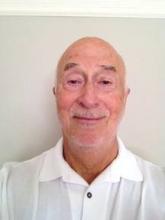A sleep physician, when presented with probable obstructive sleep apnea, needs to study the patient to confirm diagnosis, then treat the patient. The hard part is the treatment. The physician needs to convince people to accept continuous positive airway pressure (CPAP) therapy.
Dr. Charles W. Atwood, FCCP, associate professor of medicine at the University of Pittsburgh, recently reported that in a controlled Veterans Affairs environment, over 2 years the cost of a home sleep test was $564 less than that of an in-lab study (CHEST Physician, July 2014 p. 27). It is no surprise that the test cost less; however, he also stated that there was no difference in clinical outcomes after 2 years of follow up.
I have practiced sleep medicine in a group of five physicians, all of whom are board certified in pulmonary disease and sleep medicine. Our studies are usually performed in an American Academy of Sleep Medicine–accredited eight-bed lab or a neighboring, accredited two-bed lab.
Whenever possible, we perform split-night studies on OSA patients. We utilize home sleep tests (HSTs) when appropriate, in accord with AASM guidelines. Our HST patients are taught how to wear the testing device and if the study is positive, patients are given a 3-day trial of autotitrating CPAP, after a mask fitting, individual instructions, and the opportunity to call for help, 24/7.
On the other hand, we sometimes see HST devices that have been mailed to patients; and if the study is positive, a CPAP machine is mailed. We see patients who have had an HST ordered by a non-sleep physician, and the treatment is left to the durable medical equipment company. The physician seems to assume that the DME supplier will appropriately fit patient with mask and follow patient’s compliance.
Unfortunately, this does not always happen. Patients may never be followed. Patients have appeared in our office, after 5 years of using CPAP, because they heard that there is a way to check compliance, or that they can get a new machine. Some patients’ masks are held together with masking tape and superglue; and some patients have significant ulcerations on the bridge of their nose because of improper mask fit.
In our five-physician practice of sleep medicine, we use the equivalent of a full-time staff person to interact with the DME companies on the patient’s behalf, and to correct problems with CPAP machines and masks.
Clearly, an HST without follow-up does not yield equivalent compliance compared with a lab split-night study. In the lab, the patient is introduced to CPAP by a compassionate sleep technologist, who is present during the titration to allay anxiety, to change masks as needed, and to reassure apprehensive patients. Without follow-up care, there is a much higher noncompliance rate.
Not only does the patient suffer when noncompliant with CPAP because of lack of adequate follow-up after an HST, but the bed partner’s sleep is disturbed, families are disturbed by the patient’s symptoms, job performance may suffer, and a sleepy driver is a potential danger to self and community. Payers may save dollars by paying for the HST per se; but without adequate follow-up of a patient after an HST, future health issues or accidents obviate any savings to the payer.
Conclusion: In a controlled setting, such as a Veterans Affairs hospital, where a sleep physician has control of testing, CPAP delivery, and follow-up, an HST may offer compliance similar to that of an in-lab study. However, in a community practice, even in a suburb where patients are well informed regarding their health issues, unless an HST is performed in a sleep center or by a physician knowledgeable in sleep medicine, who follows the patient and checks compliance, there is a major difference in the clinical success rate.
Without clinical follow-up of patient compliance, an HST per se may initially cost less, but the HST provides less value.
Dr. Cohen is a founding board member of the California Sleep Society and is in private practice in the San Francisco Bay area.

